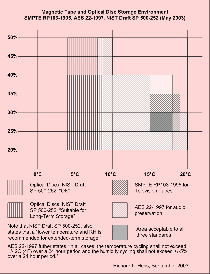UPDATE: March 2008…Cold playback (see this article) seems to work with the two tapes mentioned in this article, 3M 175 and Sony PR-150. We’ve had confirmation from several sources who have tried it.
For a current list of degrading analog tapes, click here.
Fellow restorer Doug Pomeroy sent me a photocopy of Herman Burstein’s “Tape Guide” article from the May 1977 issue of “Audio” magazine. Robert Coe of Manchester, CT, wrote in saying “…some of these [Scotch 175] tapes have developed a high frequency chatter or squeal which is mechanical and can be stopped by rubbing the tape with a light coating of talcum powder. The squeal only occurs on the Scotch 175 tape even when used with several different brands of tape machine.” Burstein replied, “Yes, I’ve heard other complaints about squeal, sometimes involving Scotch tape which is not surprising in view of 3M’s large share of the market, but yours is the first complaint about 175 tape.” He went on to say that another 3M tape exhibited this but it was limited to the batch and 3M replaced it.
We do not recommend the talcum powder approach as it overall has proven to be a bad idea since it gums up the machines and increases spacing loss more than other solutions.
Doug is currently having a joyous bout with 175 but Art Shifrin apparently has a proprietary mechanical fix to the tape deck that allows playing 3M 175.
We are researching more about 175 and hope to have updates. The use of decamethylcyclopentasiloxane (D5 or cyclomethicone) has had mixed results with 175 and Sony PR-150, another known squealer.
